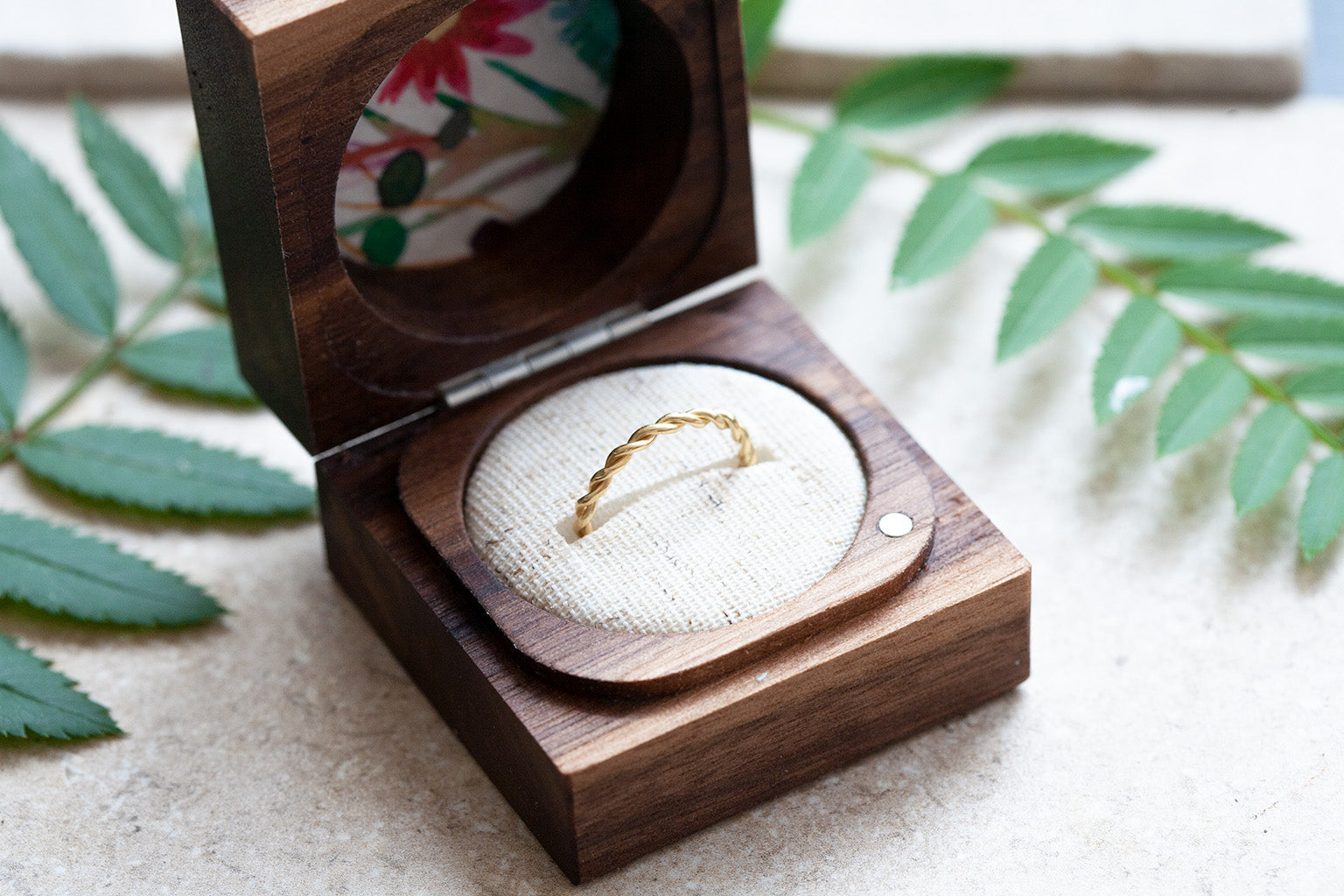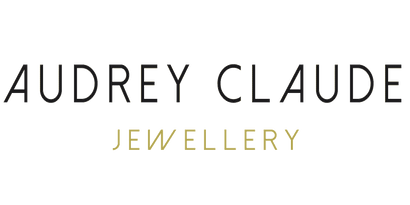Your Cart is Empty
SHOP
Metal Types - What is the difference between 9ct and 18ct Gold?
October 06, 2022 4 min read

Metal choice can be a big decision. It may be that you just love a particular type of metal colour and how it looks against your skin. Whatever your reason for choosing a particular metal I wanted to give you some more knowledge on the precious metals I work with.
Gold - Au
Pure gold is 24 carat and is a very soft metal not really suitable for jewellery that’s going to be worn a lot such as rings. The gold we work with is either 18 carat or 9 carat, either yellow or white.
18ct Yellow Gold - This is 75% pure gold referred to as 750 parts per thousand, on the hallmark of 18carat gold you’ll see the mark 750 confirming that it’s 18ct gold. (out of a possible 24 carat pure gold 18 parts are gold to 6 parts other metals hence where the term 18 carat comes from)
The alloys that make up the remaining 25% are copper silver and zinc
18ct yellow gold has a beautiful rich yellow colour.
9ct Yellow Gold is 35% pure gold - 350 parts per thousand ( 9 parts gold to 15 parts other metals alloys of copper, zinc and silver)
9ct yellow gold is a paler yellow colour than that of 18ct carat gold.

18ct White Gold has the same quantity of pure gold as yellow gold 75% or 750 parts per thousand. However the alloys are different and give it it’s white colour these are typically palladium (from the platinum group of metals), copper and zinc. Due to the palladium alloy, 18ct white gold is slightly harder than the 18ct yellow gold.
18ct white gold has a gunmetal white colour with a slight warmth to it.
9ct White Gold -Similar to its yellow gold counterpart 9ct white gold is made up of 35% pure gold or 350 parts per thousand. The alloys for 9ct white gold are silver, palladium, copper and zinc.
9ct white gold has a warm white colour and a slightly brighter white than 18ct.

Which metal to choose?
18ct gold is better suited to pieces chosen to last with future generations in mind. 9ct gold is technically harder than 18ct gold but this in fact means that although it will still last a life time it’s more brittle and therefore less resilient to knocks and scratches. 18ct gold being that bit softer holds it’s own over time.
Some jewellers will rhodium plate white gold to give it a whiter brighter appearance. This is not something we offer with Audrey Claude jewellery as our preference is for the slight warmth that of the white gold.
Platinum - Pt
Most platinum is 900 or 950 parts per thousand on the fineness scale. The other 50 - 100 parts are often other platinum group metals
Almost as ductile as gold but is harder to scratch than either. It dents more easily than gold. Platinum takes a high polish and is highly resistant to tarnish. Denser than gold which gives it strength and a heavier feel than other metals.
Less brittle than gold alloys so platinum prongs are less likely to break and great for delicate rings with large diamonds!
A steely white colour and the most hard wearing and durable of the precious metals.
Platinum is a very rare metal and there is currently no Fairtrade platinum. Although recycled platinum is available it can't be guaranteed that it's from entirely recycled sources.
Sterling Silver - Ag
Sterling silver carries the hallmark 925. Meaning 925 parts per thousand so 92.5% is pure silver.
The least expensive of the precious metals. It is more prone to corrosion and will react with chemicals in the atmosphere causing it to tarnish. It is softer than the alloys used in gold and so is not ideal engagement rings with preceious gemstones to be worn everyday.
Metal Terminology you may come across:
Here are a few terms that you may hear referred to with regards to the precious metals.
- Hardness - how well the metal resists scratching and denting
- Durable - Long-lasting, especially without sustaining damage or wear
- Carat - a unit of measure for the fineness of gold, based on a total of 24 parts.
- Alloy - a mixture of two or more metals
- Malleable - ability to be shaped or bent without breaking.
- Heft - weight or heaviness of an object.
- Luster - the appearance of materials surface in reflected light.
- Tarnish - a mild form of corrosion caused by contact with chemical elements or compounds in the environment.
- Metal memory - if a metal tends to return towards its previous shape. Platinum has the least metal memory. Once platinum is bent it tends to stay in position - this lack of metal memory means that platinum has superior holding power.
- Fineness - a measure of the purity of a precious metal
- Fine – virtually free of impurities or alloying metals
- Hand Fabrication - When looking at jewellery you’ll also come across the term hand fabrication, which is how we make the pieces here at Audrey Claude. This essentially means that every element is formed, assembled, joined and finished entirely by hand and with hand tools. Hand fabrication is time and labour intensive and so the pieces are often a little more expensive however the process has many benefits. It offers a great deal of creative freedom and can result in designs that might be impossible with other methods. It’s often used for creating custom designed one of a kind pieces, which is something we love, or to build pieces around gems that would be difficult to set in pre-made mountings.
I hope this has helped get a better understanding of the different metals we use. If you’d like to discuss your own piece of jewellery please do get in touch either through our contact form or simple drop me an email!
Get In Touch




